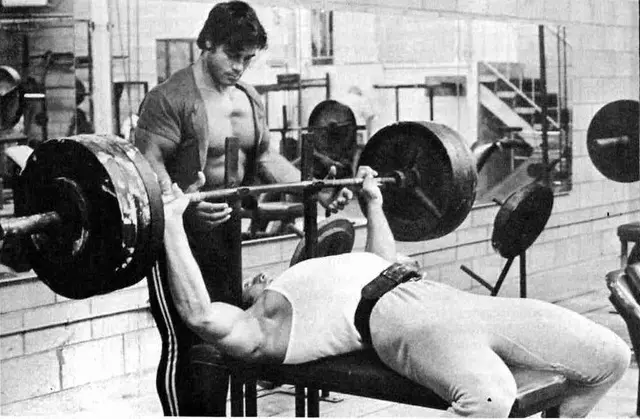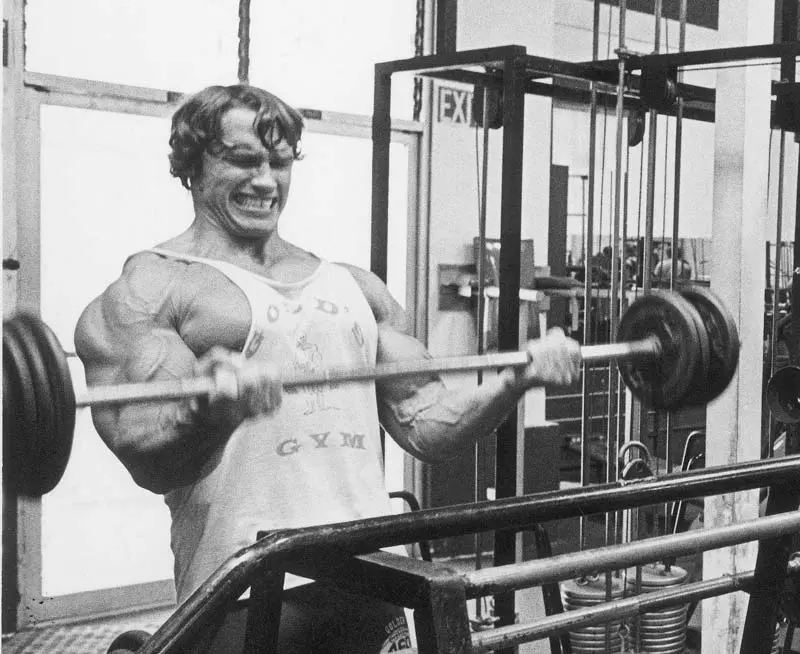When it comes to building muscle and strength, variety is essential. If you always do the same workout using the same exercises, sets, reps, and weights, your progress will soon stall. That’s because your body will get used to the demands of your workout. As soon as your training stops challenging your muscles, they’ll cease to adapt and grow.
Because of this, most training experts believe that you should make small changes to your workout regimen week by week and adopt a new program every 6-8 weeks, or whenever you notice that your rate of progress is starting to decrease.
Changing your workout involves manipulating the so-called training variables. By changing some or all of these things, you can keep your workouts fresh and productive, providing your muscles with the novel training stimulus that triggers increases in strength and size.
The main training variables are:
- Weight
- Reps per set
- Number of sets per exercise
- Number of exercises per muscle group
- Choice of exercises
- Choice of workout equipment
- Choice of training split
- Length of rest between sets
- Training frequency
Using these variables, you can create an almost infinite number of training programs that will help keep you out of a training rut and make sure you continue making progress right up to your genetic potential.
Of course, things like nutrition, rest, and recovery also have a part to play, but if you keep on doing the same old workout, even if you eat and sleep like a boss, your progress will still grind to a halt.
Level Up Your Fitness: Join our 💪 strong community in Fitness Volt Newsletter. Get daily inspiration, expert-backed workouts, nutrition tips, the latest in strength sports, and the support you need to reach your goals. Subscribe for free!
There is another variable that some people manipulate and even believe to be one of the most important drivers of progress – time under tension or TUT for short. But is it essential, or is time under tension just a myth? Let’s discuss!
What is Time Under Tension?
Time under tension is the amount of time your muscles are working during a set. TUT is usually discussed alongside another training factor – tempo. The easiest way to explain TUT and tempo is with an example:
Let’s say you’re going to do a set of ten leg extensions. Each rep uses a 2:2 tempo, meaning you lift and lower the weight in two seconds, so each repetition takes four seconds to complete. Ten reps at four seconds each gives you a time under tension of 40 seconds.
If you speed up, your TUT would be less, and if you slow down, your TUT would be more, despite doing the same number of reps.
Some experts believe that there is an optimal time under tension for muscle growth. As such, they prescribe a specific tempo to ensure that your muscles are under tension for the appropriate duration for the set.
Proponents of TUT believe that the optimal time under tension for muscle growth is 30-60 seconds, and most shoot for 40-50 seconds per set. They think that working outside this range (less than 30 seconds or more than 60 seconds) will make your workouts less effective.
To manipulate the TUT, all parts of the given rep are given a time. For example, you might see something like 4:1:2:1. This means you are supposed to lower the weight in four seconds, pause for one second, lift in two seconds, and pause for one second, giving you a TUT of eight seconds per rep.
By adjusting your rep count and your TUT, it is possible to ensure that every set you perform falls in the 30-60 second TUT range. However, studies suggest that TUT may not as important as some people believe.
The Time Under Tension Myth
It’s a little unfair to decry TUT as a myth; it is a helpful training variable that you can manipulate to make your workouts harder. After all, moving from a 2:2 tempo to a 3:3 tempo will make your set 33% longer even if you do the same number of reps.
However, while you CAN alter your TUT, there is no reason to get overly hung up on your training tempo.
Studies have shown that TUT does not have a significant impact on muscle growth (1). In one study, participants were divided into two groups. One group trained using a TUT of 30-48 seconds per set, while the second group trained using 90-120 TUT per set.
According to TUT theory, the first group should have experienced better muscle growth because they were training in the “sweet spot” of 30-60 seconds. However, there was no significant difference in muscle hypertrophy – both groups saw similar results despite the difference in TUT.
Another study compared a TUT of between 30-40 seconds with a TUT of 9-12 seconds. Again, muscle growth was almost identical, although the second group, who trained with much heavier weights, experienced a more significant increase in strength (2). This study is especially interesting because it was conducted on experienced strength trainers rather than novice lifters.
Yet another study came to much the same conclusion (3). In this one, participants were split into two groups. One group did four sets of 10-12 reps using a TUT of 50-60 seconds, while the second group did four sets of 3-5 reps with a TUT of 15-30 seconds. Again, there was no significant difference in muscle gain. Like the previous research, this study was conducted using experienced lifters.
A large body of research suggests that TUT is not all that important for muscle growth. You can build muscle with sets lasting 60-90 seconds and with sets lasting 15-20 seconds. That’s good news if you find the entire concept of tempos and time under tension confusing or just plain distracting.
The Disadvantages of TUT Training
It’s clear that time under tension is not critical for building muscle. Using a specific TUT won’t make your workouts more productive and may even be a drawback.
The disadvantages of TUT include:
Too prescriptive
Your body is not a machine. Things like energy levels and motivation can vary from one workout to the next. That’s why a lot of workouts are written using rep and weight ranges and not absolute values you have to hit.
Forcing you to use a specific TUT and tempo means there is less “wriggle room” in your workout to allow for those good and bad days. What if you can’t maintain the prescribed tempo? If you were a true TUT believer, you might think that your workout was useless when, in fact, even if you fall short of the prescribed time under tension, your training will still be productive.
Too much to think about
Lower in four, pause for one, lift in two, pause for one, don’t forget to breathe, keep those shoulders down and back, brace that core, God that’s heavy…how many reps have I done?!
If you adopt a specific tempo and TUT, you’ll have to get used to thinking about lots of things at once. This can be distracting, overwhelming, and even stressful.
NOT worrying about TUT means you can just focus on lifting and lowering; grip it and rip it, bro!
Level Up Your Fitness: Join our 💪 strong community in Fitness Volt Newsletter. Get daily inspiration, expert-backed workouts, nutrition tips, the latest in strength sports, and the support you need to reach your goals. Subscribe for free!
No more cheat reps
There is no room for cheat reps in TUT training. Every rep should be identical and use the same tempo. But what if you want to squeeze out another rep or two of overhead presses by jerking the bar up with a strategic leg drive? How does that fit into a predetermined tempo?
Some tempo prescriptions feature the letter X, which stands for explosive. For example, if you see 2:0:X:1, that means lower in two seconds, no pause, lift explosively, and then pause for one. However, that’s your prescription for the entire set and not just your last rep or two. If you do cheat, you’ll be breaking TUT and tempo protocol.
Different exercises benefit from different tempos
A lot of workouts use the same tempo and TUT for all the exercises. That’s a problem. Some exercises use a large range of motion, while others are much shorter. Compare wrist curls to squats, for example. This means that a tempo and TUT that work for one exercise may not work for another. Using the same TUT for all exercises in your workout could make some of them less productive.
You may not be able to train as heavy
If you want to get strong, you need to lift heavy weights. Invariably, this involves at least some acceleration and momentum. Lifting slowly means you won’t be able to use as much weight. Training with a slow tempo and extended TUT will increase muscle size but could mean that your strength gains suffer.
The Benefits of Time Under Tension Training
Just because time under tension isn’t the Holy Grail of strength training doesn’t mean using a prescriptive tempo is a waste of time. In fact, it can still be valuable and beneficial.
Times when adopting a slower tempo can be helpful include:
When injured
Using a slower tempo and longer TUT means you won’t be able to lift such heavy weights. If you are injured, using a slower tempo means you can reduce things like joint stress and muscle strain, allowing you to continue training and making progress.
Personally, I used slow tempos and light weights when recovering from a very severe bout of biceps tendonitis. At times, the condition was so painful that I couldn’t straighten my elbow after using my phone!
To maintain my back and biceps strength and size, I cut my weights by 60-70% and did exercises like seated rows, lat pulldowns, and biceps curls using a 6:6 to 8:8 tempo for sets of just 3-5 reps.
This meant less joint, tendon, and muscle stress but plenty of metabolic stress. The result? Despite training with light weights and low reps, I maintained muscle mass and bounced back quickly when the injury finally healed.
Getting a better workout from light weights
Most gyms have more than enough weights to satisfy even the strongest lifter. But, what if you train at home, only have a small number of weights, and can’t or don’t want to buy more?
Training with a slower tempo and longer time under tension will make light weights feel heavier and produce comparable results. Yes, you COULD just do more reps, but as 15 turns to 20 and 20 turns to 30, you could soon get bored. Using a slower tempo means you can adopt a more moderate rep count.
Improving your mind-muscle connection
Using a slower tempo means you should be able to feel your muscles working more. With no momentum, there should be constant tension in your muscles. This is useful if you have trouble feeling the target muscle working when you train.
For example, many people feel exercises like pulldowns and rows more in their biceps than they do their lats. Using a slower tempo and longer TUT may help remedy this problem.
For variety
As stated at the beginning of this article, doing the same workout over and over again will lead to a progress plateau. By manipulating your TUT, you can add some extra variety to your workouts to ensure they continue to produce the results you want.
For example, over four weeks, you could do:
- Week 1 – 20-30 seconds TUT
- Week 2 – 40-50 seconds TUT
- Week 3 – 60-70 seconds TUT
- Week 4 – 30-40 seconds TUT
This doesn’t mean that any specific TUT will produce better results, but by varying your TUT, you will provide your muscles with a novel training stimulus that will keep them growing. Remember, though, using a very long TUT means lifting less weight. If you want to get stronger, a shorter TUT is best.
Chin-up and Dip Time Under Tension Workout
I know we’ve said that TUT isn’t all that important, but that doesn’t mean you should dismiss controlled tempos entirely. This mini workout takes less than three minutes to complete but could increase your strength and muscle size despite its brevity. Do this workout whenever you are short on training time but still want to work your upper body.
1. 60 Second Chin-up
Your first exercise is a super slow chin-up. Chin-ups work your back, biceps, posterior deltoids, and lower traps.
Begin by hanging from your chin-up bar with an underhand, shoulder-width grip, and arms straight. Alternatively, you could use a neutral grip. Start a timer and slowly pull your chin up and over the bar, taking 30 seconds to complete your ascent. Then, without pausing, slowly lower yourself back down, again taking 30 seconds.
Keep moving slowly for the entire rep; no locking off for a rest. Make sure you can see the sweep hand of a clock or ask a training partner to call out the time so you can move at the correct speed.
A 30-second ascent and descent mean your rep should take you exactly 60 seconds. Rest one minute and then move onto your second (and final) exercise.
2. 60 Second Parallel Bar Dip
Parallel bar dips work your chest, triceps, and anterior deltoids. Paired with chin-ups, these two exercises work all of your major upper body muscles.
Begin your dip in the bottom position. This is important because you are stronger eccentrically than you are concentrically. You may not be able to complete your super slow dip if you start with the decent and end on the ascent.
As before, take 30 seconds to lift yourself up and another 30 seconds to come back down. Do not lockout at any point, and make sure you keep moving – no pauses, please!
Time Under Tension – Wrapping Up
Time under tension is not as important as we once thought. That doesn’t mean it’s a myth, but adopting a specific training tempo won’t make your workouts more productive. In fact, using a slow tempo means you won’t be able to lift as much weight, and that will reduce mechanical tension, which is an essential factor in building strength and muscle mass.
That said, Tempo and TUT are still useful training variables that you can use to make light weights feel heavier, strengthen your mind-muscle connection, and train around injuries. However, it certainly ISN’T the be-all and end-all of effective strength and bodybuilding training.
References:
- PubMed: Resistance Exercise Load Does Not Determine Training-Mediated Hypertrophic Gains in Young Men https://pubmed.ncbi.nlm.nih.gov/22518835/
- PubMed: Effects of Different Volume-Equated Resistance Training Loading Strategies on Muscular Adaptations in Well-Trained Men https://pubmed.ncbi.nlm.nih.gov/24714538/
- PubMed: The Effect of Training Volume and Intensity on Improvements in Muscular Strength and Size in Resistance-Trained Men https://pubmed.ncbi.nlm.nih.gov/26272733/

















